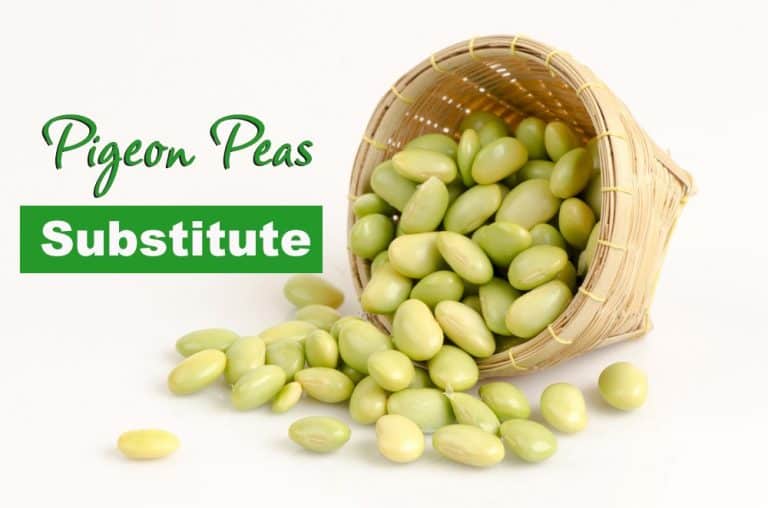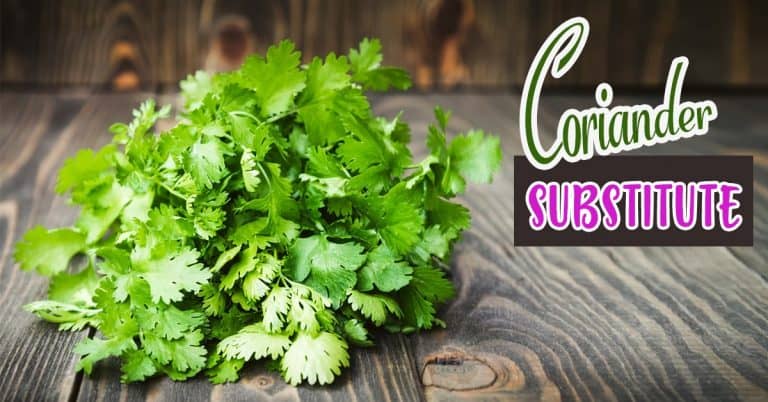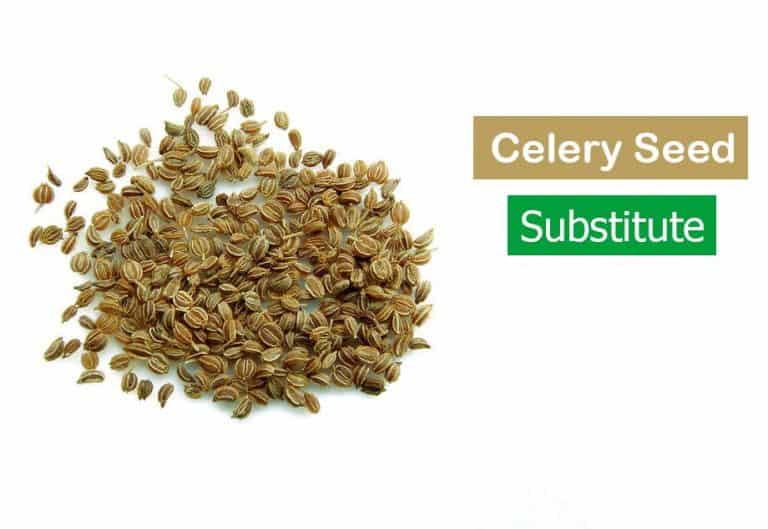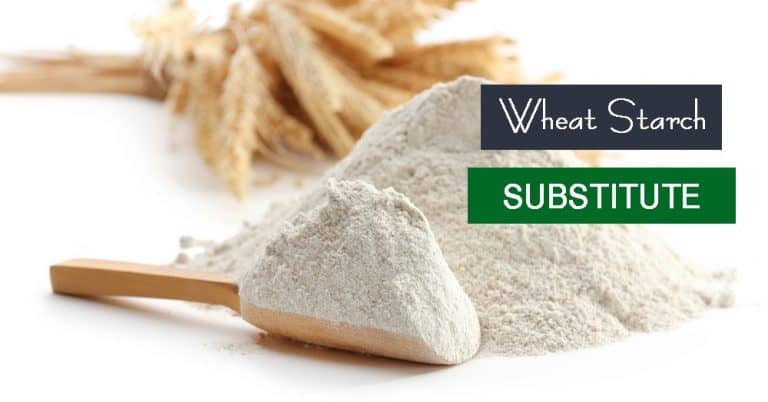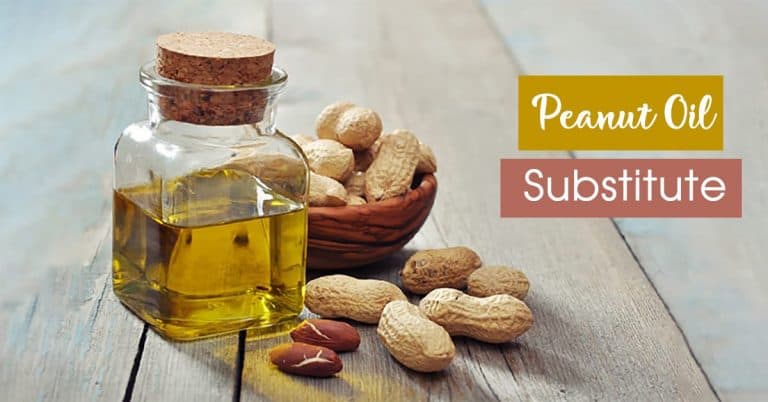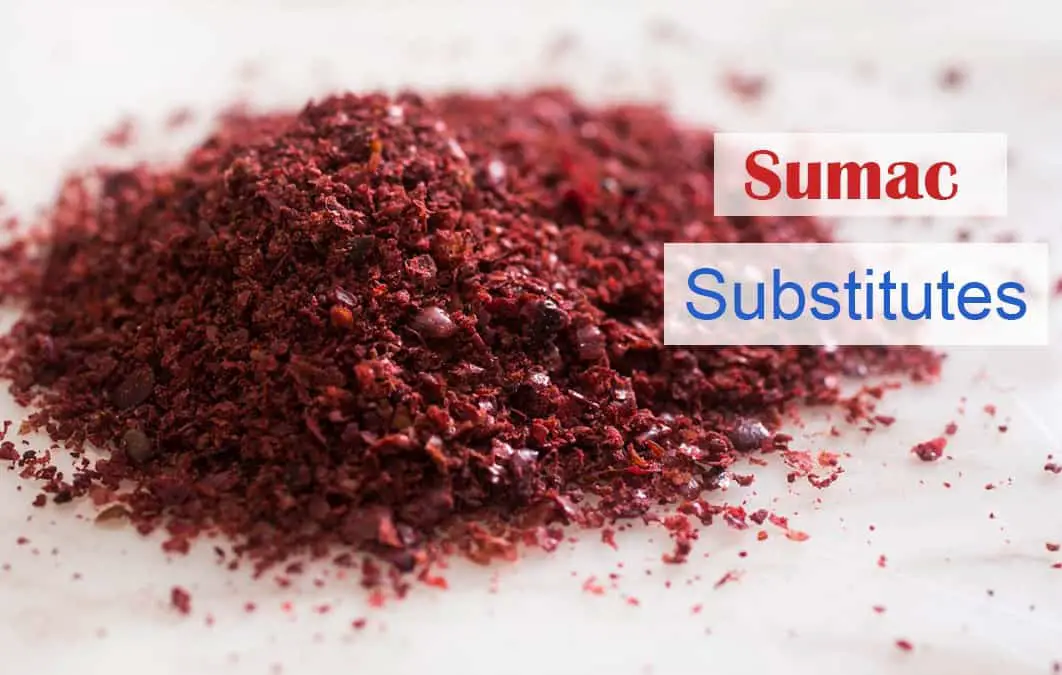
As a tasty and exotic complement to several Middle Eastern dishes, sumac is one of those spices you should always have in abundance when getting into this regional cuisine.
But inexperienced cooks could underestimate how much sumac they need each time and how their jar runs out so quickly. Stop turning your spice rack upside down and consult the list below to find a suitable substitute for sumac and give your dish some finishing touches it deserves.
10 Best Substitutes For Sumac
1. Lemon Pepper Seasoning
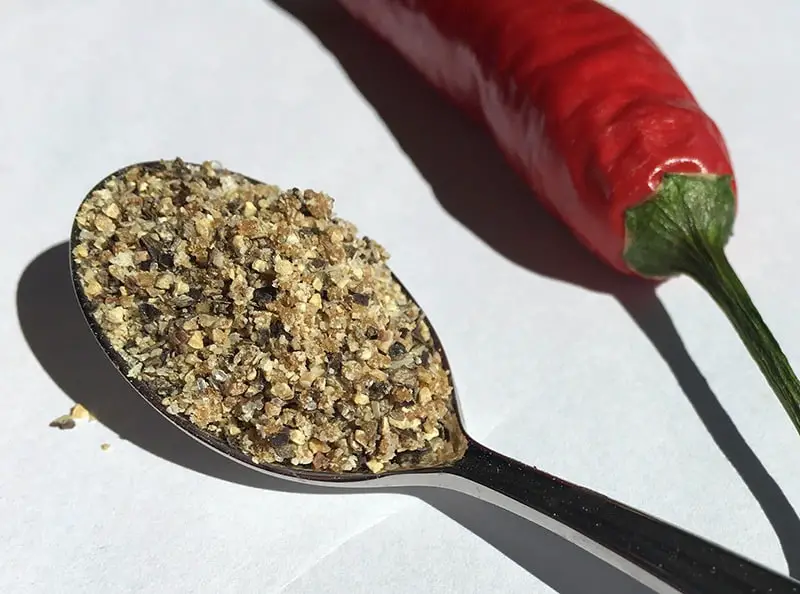
Made from a combination of dried lemon zest and cracked pepper, lemon pepper is a seasoning most people can easily make at home or just use store-bought products.
Coincidentally, it’s also among the closest sumac substitutes you can have, able to provide both the salty and tangy, sour tastes.
Lemons are already a popular ingredient in Middle East culture, where sumac was widely used before the Romans brought in lemons. Since then, lemons have become a common way to give Middle Eastern dishes a taste of sourness.
Using lemon pepper seasoning, therefore, should not make your dish less authentic than cooking it with sumac.
Lemon pepper works best with seafood and grilled poultry. The ideal amount many experts have recommended is one and a half times the sumac required for the recipe.
Bear in mind though, that due to the high sodium content in lemon pepper, don’t include it in your low-salt diet or at least reduce the amount of salt in your seasoning.
Premade lemon pepper sold in grocery stores may contain unwanted ingredients, so make sure to read the label carefully. Making lemon pepper at home is still the best way to control the salt intake, and on top of that, it tastes much better.
While it’s possible (and quicker) to make lemon pepper seasoning with dried ingredients, fresh spices can give you an even stronger flavor.
Scoop your homemade lemon pepper into an airtight jar. When properly stored in a cool, dry location, it could last for up to six months.
2. Za’atar
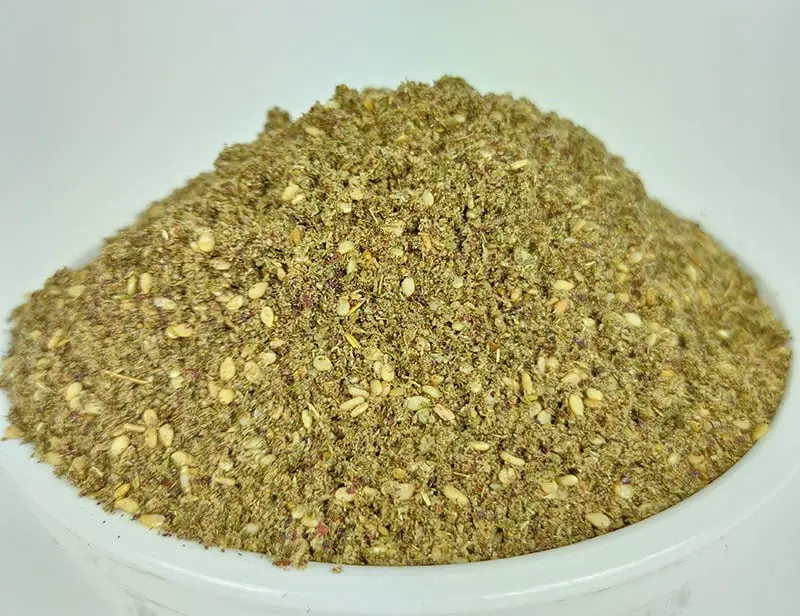
If you happen to have Za’atar in your kitchen, don’t hesitate to swap it into your dish in place of sumac. At the end of the day, this spice mix has sumac as one of its common ingredients.
The role of sumac in Za’atar is to bring an acidic and tangy flavor – exactly what we’re looking for here. Your dish will also be more flavorful and tasty, thanks to other herbs and spices in Za’atar.
This Middle Eastern spice blend is a good choice to bring an intense flavor out of meat, chicken, roast vegetables, soup, pasta, and dressings. Just utilize it in the same way that you use salt: sprinkle it over your dish or rub it onto poultry, fish, or meat before cooking.
However, the combination of several dried herbs and spices in this mix also means your dish may have a flavor profile slightly more complex than the original taste intended with only sumac.
In addition to the citrus taste of sumac, you may also have a slight sweetness from marjoram or a hint of bitterness from oregano. And to make matters worse, we can hardly control how they’re mixed in pre-made Za’atar.
The safest way to use it as a sumac alternative is to start with the amount recommended for sumac and go from there to meet your taste. If you purchase commercial Za’atar products, check the list of ingredients to see if you’re allergic to any of them.
While it ultimately boils down to the exact amount of each spice and herb used in the mix, Za’atar typically boasts an impressive array of health benefits.
They contain a lot of organic compounds and nutrients, including quercetin, carvacrol, gallic acid, and thymol.
These herbs and spices could boost your immune system, improve skin circulation, strengthen the bones, aid memory, and improve mood, among other things.
3. Lemon Juice
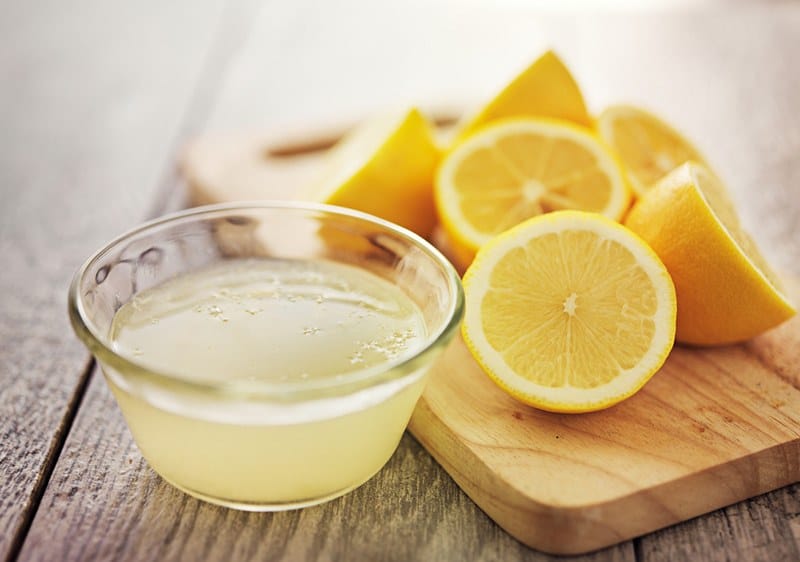
Another way to replace sumac with lemon is to use its juice, which adds an enhanced citrus flavor and tartness.
You may easily notice the lack of a spicy complexity and the unique red hue. But in many situations, the tangy and sour notes are prominent enough to make a case for lemon juice as a substitute. Tang and acidity are the primary reasons sumac is popular in Middle Eastern cuisine, and lemon juice has both.
Lemon juice pairs well with lamb kofta kebabs or Moroccan tagine, where its acidic zing can finish your dish and brighten the flavor.
Add only a little lemon juice at the end and taste it first before adjusting until it satisfies your palate. Inexperienced cooks usually put in too much juice and strike the flavor out of balance with a too strong sourness.
One more thing, use lemon juice right after extraction because its original fresh flavor can’t last too long.
Using fresh juice also ensures its nutritional profile. It’s a well-known fact that lemons have a high content of vitamin C, plant compounds, and soluble fiber, making them brimming with health perks.
They’re not just an ideal choice for a low-fat diet and your weight loss program but can also reduce the risk of cancer, digestive issues, kidney stones, anemia, and heart disease.
4. Lemon Zest

In a similar fashion to its juice and pepper seasoning, lemon zest can’t only mimic sumac’s texture but also the tartness.
Combine it with some salt, and you have on your hand a quick solution to your lack of sumac. Lemons are easy to get your hands on, and making lemon zest can’t be any easier – a time-saving mixture that anyone can create in the blink of an eye.
Like other lemon products, the peels are a proper alternative because they offer a similar citrus-like sourness as sumac. You can’t get the look, but at least you can have the feel (to some degree.)
Both lemon zest alone and its mixture with salt go well with most dishes, including seafood and meat. If you need more acidity, squeeze some juice as well.
Use a zester or a grater to grate the skin of the lemon. Remember to not get to its pith – the white flesh that could make your dish bitter. One-to-one is a good ratio to replace sumac with lemon zest.
A quick fix is still a quick fix, however. If your health isn’t in a good position to consume salt in a large amount, it’s better to use lemon zest only as a one-time alternative.
Go with other substitutes the next time, or stock your spice rack with real sumac if you still crave some tasty Middle Eastern dishes in the future.
5. Amchoor
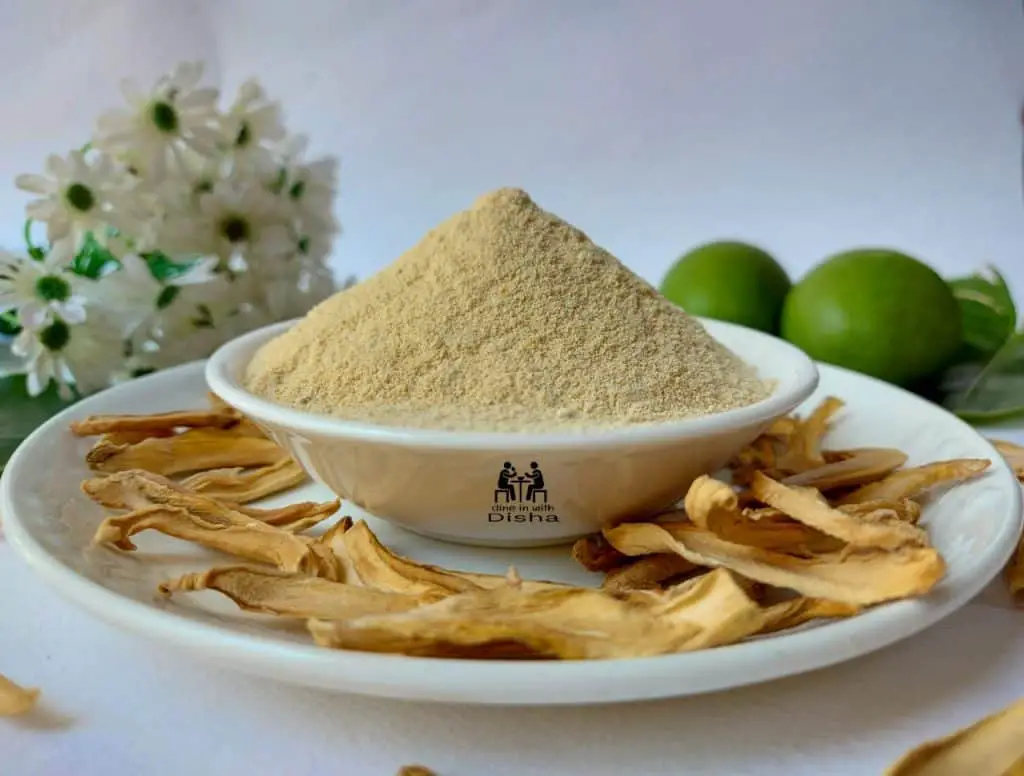
Popular in Indian cuisine, amchoor (or amchur) is basically ground dried unripe mangoes.
Sour and citrusy are the dominant flavors of this powder, allowing it to replicate sumac’s role in some dishes. The slight sweetness of amchoor might create a significant departure from the original flavor of your dish. But when in an emergency, it’s still better than nothing.
The sour profile of amchoor allows it to marry up well with white meat and fish dishes.
But the biggest advantage of this souring agent over lemon juice, for example, is that it doesn’t add liquid to your dishes. If you want to preserve the delicate crispness of roasted vegetables while adding some tartness, amchoor is the way to go.
You should add amchoor at the end to keep the best flavor. When not in use, keep it away from light and heat in a tightly sealed jar.
What makes amchoor less practical than other choices as a sumac alternative is it’s not as widely available as other ingredients outside of India Towns. But if you happen to have it on hand from an Indian market, don’t hesitate to give it a try as amchoor is also linked to a healthy body.
Amchoor brings most of the same health benefits as mangoes. As a great source of antioxidants and vitamin A, C, and E, this powder is good for your hair, skin, and your immune system.
6. Tamarind
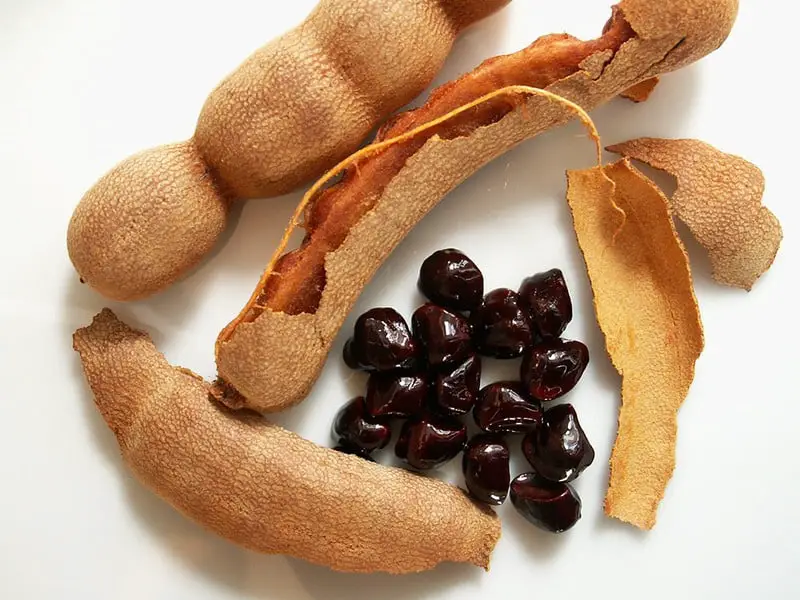
As a culinary staple in Mexico, Thailand, India, and the Caribbean, tamarind can heighten the flavor of both savory and sweet dishes with its distinct combination of sweet and sour taste.
But the tartness of this fruit is what makes it a solid option when sumac is not around.
Tamarind comes in many forms: frozen pulp, whole dried pods, and paste. It’s a potent and highly concentrated ingredient, so be mindful about how much tamarind you use. Make sure to add it in moderation to not ruin the balance of your dish’s flavor.
Start with just a bit of tamarind and work your way up to the desired level of sourness or tang. Tamarind can stand in for sumac in sauces, relishes, curries, and even beverages.
Though it works as a souring agent with a small amount, tamarind is still a healthy addition to your dish. This tropical fruit is rich in vitamin C, phosphorus, magnesium, iron, and thiamin – a treasure trove of good antioxidants that could aid in healing sprains and inflammation.
7. Vinegar

Vinegar could serve as a liquid substitute if you’re in a pinch and the sourness of sumac is what you expect. Vinegar is readily available in most kitchens, and its intensely sour taste could compensate for the absence of sumac.
The best thing is that this liquid ingredient is an all-around alternative, fulfilling your dish whenever calling for a sour punch. Be it sumac, lemon juice, or orange zest substitute, vinegar can do the trick.
Go easy on the amount of vinegar added to your dish, however. Use it carelessly, and the tartness of vinegar can quickly spoil your recipe with no easy fix.
As a last resort, the sour taste and acidic nature of vinegar with a sweet undertone work well with many dishes, including meat, marinades, sauces, salad dressings, and soups.
Vinegar works both ways when it comes to health benefits. Rich in minerals and vitamins, it can help lower your cholesterol level and control blood sugar.
However, the powerful nature of vinegar also means people with some medical conditions should put more attention to their vinegar intake. It could damage your teeth and lower your blood sugar level to a dangerous level.
8. Lime
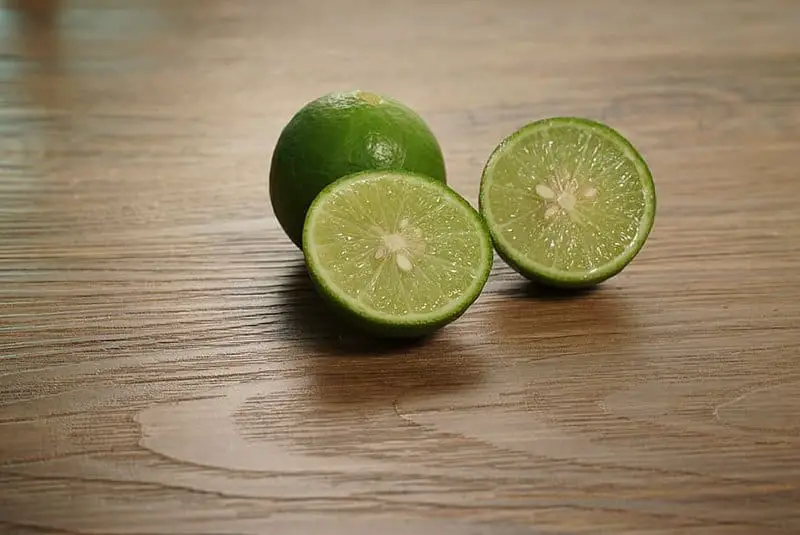
If you can swap in lemon juice as a substitute for sumac, then lime obviously has this ability too. Like lemons, you have several ways to bring the sour, tart, and slightly sweet taste of limes to your dish: juice, zest, or pepper seasoning.
Look for firm, heavy, and unblemished limes, which will make the best juice.
If you plan to use their zest, find and buy unwaxed limes from grocery stores. When you can get them unwaxed, thoroughly scrub them before zesting.
While this citrus fruit can recall the sourness of sumac in your recipes, its acidic and sugar contents are significantly higher. Make sure to keep this in mind when using limes in place of sumac in your dishes.
9. Ground Coriander
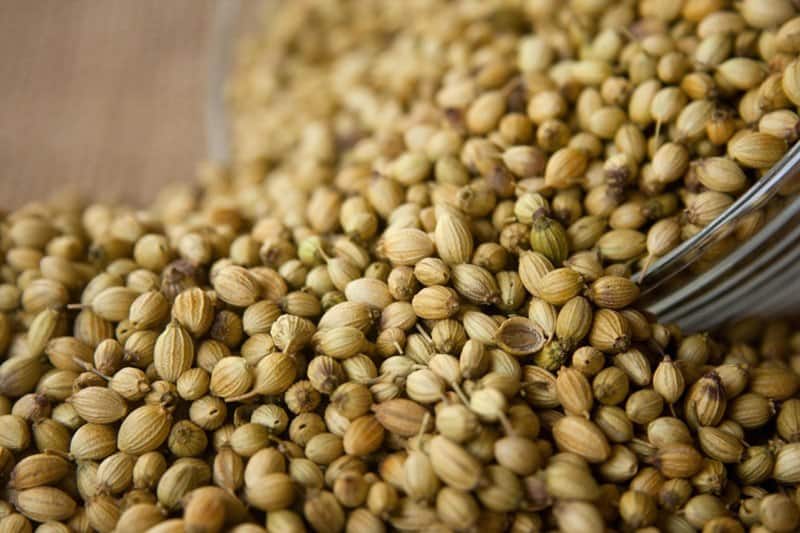
Coriander has a less vibrant and more earthy taste, but the lemony flavor can still bring a pleasant freshness to your dish like sumac. Ground coriander is quite versatile and can accommodate most recipes, including roasted meat and vegetables.
10. Smoked Paprika
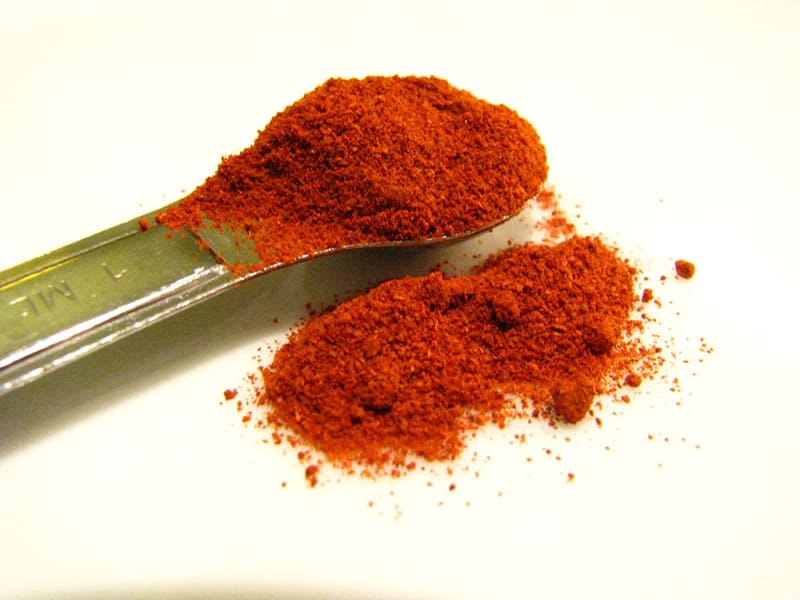
Unlike other options above, smoked paprika has nothing to do with the sour taste of sumac. Made from dried or smoked peppers, it has a smokey flavor instead.
Its bright red color is the reason it makes the cut. When your dish calls for some sumac, smoked paprika could compensate for the visual.
Use smoked paprika in moderation as its smokiness could be too pronounced for your dish.
Frequently Asked Questions
1. Is Sumac Healthy?
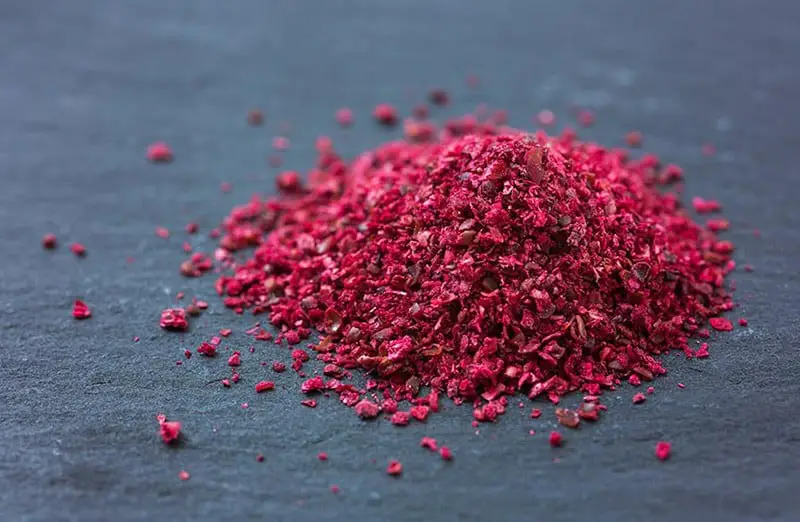
Sumac is rich in antioxidants and can reduce the risk of heart disease and cancer.
However, not all sumac varieties are edible. Usually, only the dried fruits of some red sumac are used as a tangy spice. Many varieties, including the ones in ornamental bushes across North America, can be poisonous.
2. Are Sumac And Za’atar The Same Thing?
Za’atar is actually a spice mix of several spices and herbs in which sumac is a common ingredient.
3. Where Can I Purchase Sumac?
If you adore the Middle Eastern dishes you’ve had the chance to eat and would like to cook them in the original taste with sumac, you can get it from the spice aisle of many grocery stores like Whole Foods, Kroger, or Walmart.
They carry many ground sumac brands like Ziyad, Sadaf, and Spicely.
4. Can I Buy Whole Sumac?
Most sumac you can find in grocery stores is red, coarse powder, which is ground dried sumac fruits. Whole sumac berries are rarely available in most places.
5. How Should I Use Other Ingredients As A Sumac Substitute?
The essential consideration is to avoid overpowering your dish by getting the ratio of sumac substitutes right.
When in doubt, be mindful of the amount you use, add just a little first, and adjust the taste to your desired flavor.
It’s also important to note that vinegar and lemon juice are liquid ingredients and not suitable for some dishes. Go for a dry substitute like lemon pepper or Za’atar instead.
Conclusion
Thanks to the fact that sumac is popular in Middle Eastern cuisine mainly due to its role as a souring agent, you can have plenty of alternatives when hard-pressed.
Each substitute for sumac above mimics it in a different way – and not perfectly. But they still give you a chance to finish your dish without the real sumac that is not always available in a Western kitchen. Go easy with your substitute, and we’re sure you will be satisfied with the result.
Related Posts:
- 13 Fennel Seed Substitute Ideas – Go For Seeds Or Liquid?
- Substitute For Coriander – 16 Options To Spice Up Your Dish
- Mint Substitutes: 12 Best-Recommended Options
- What Are The Best Scallion Substitutes? How To Cook Them Right?
- Substitute For Green Onion: Top 12 Options You Should Try

